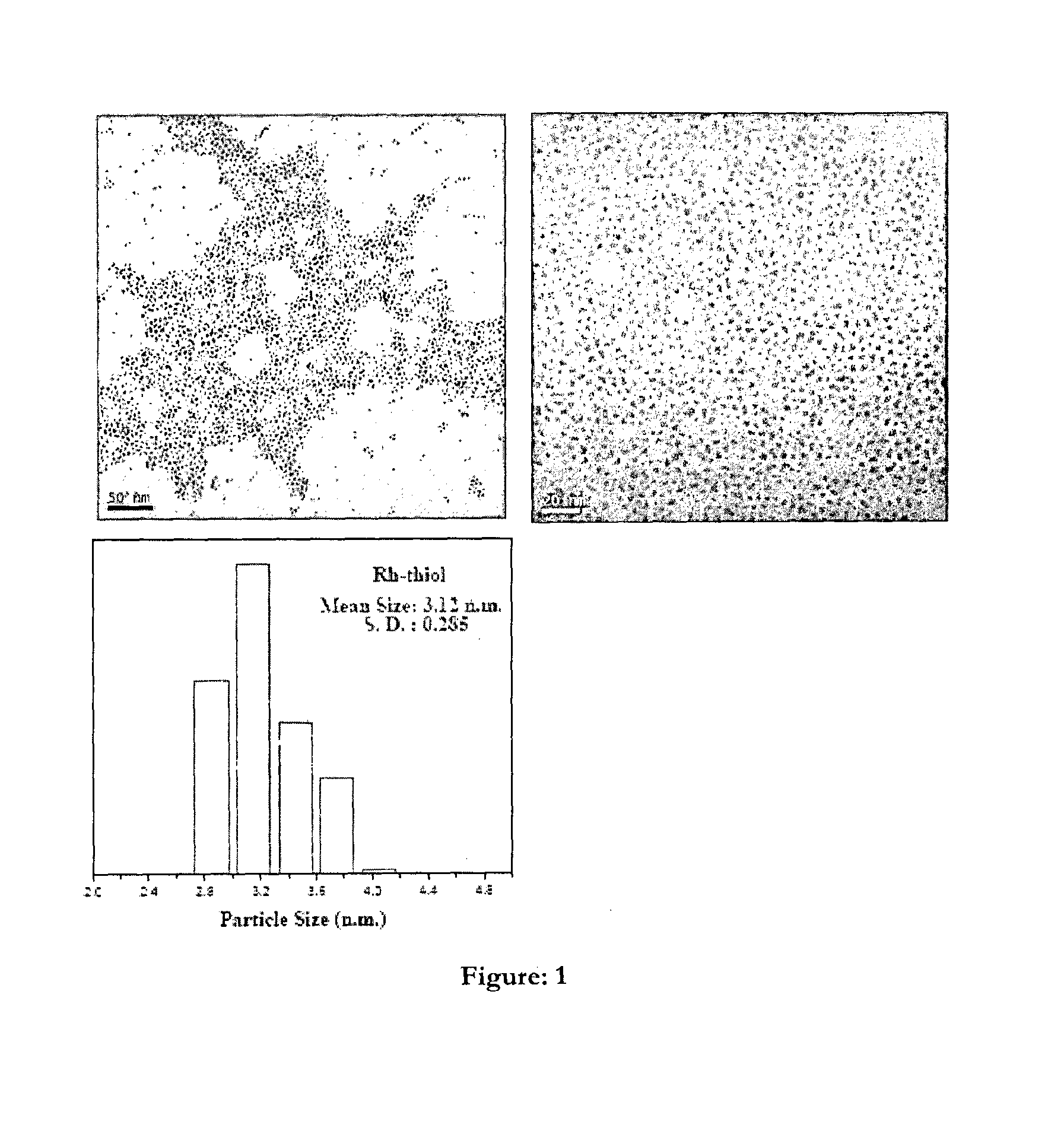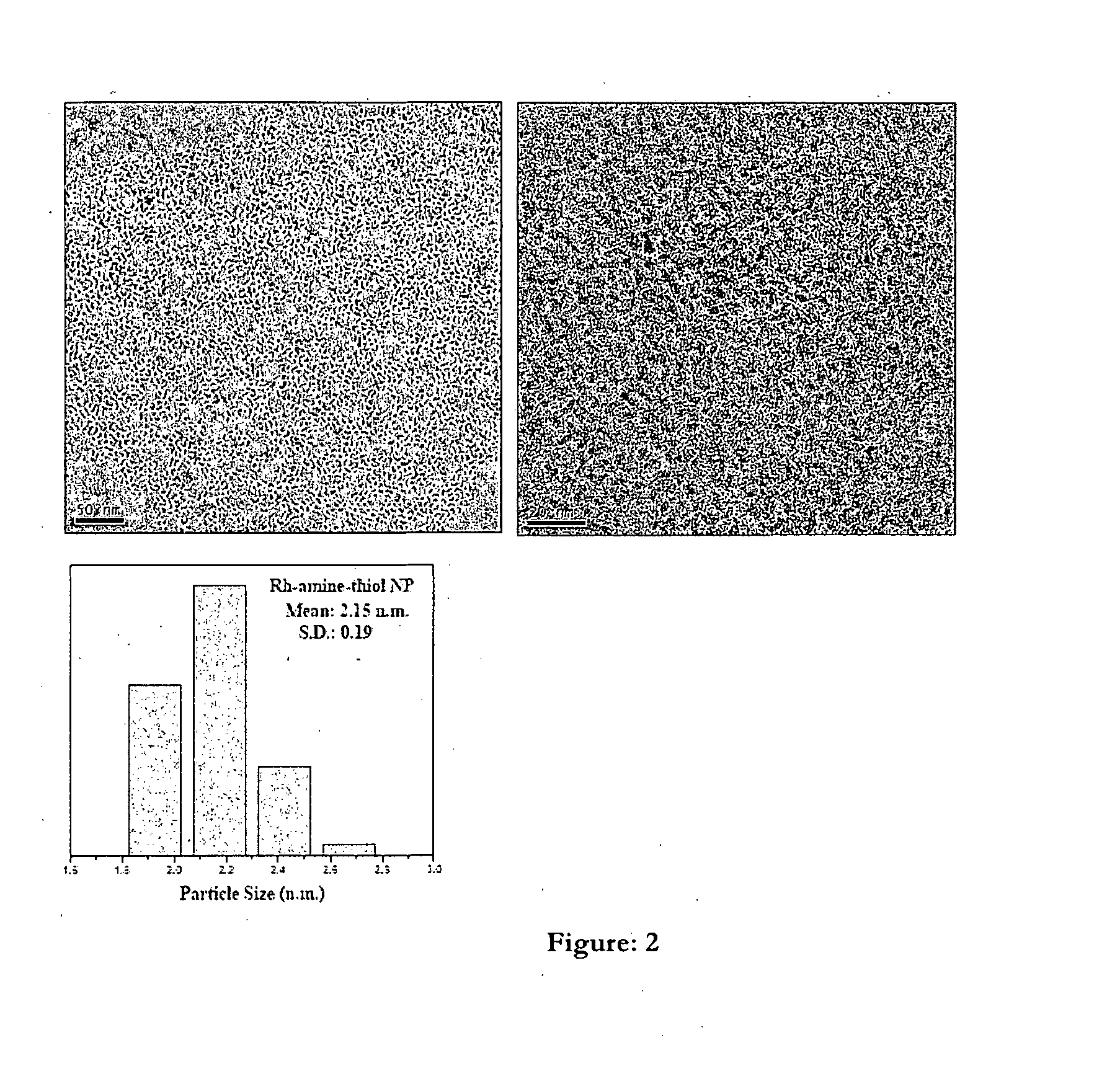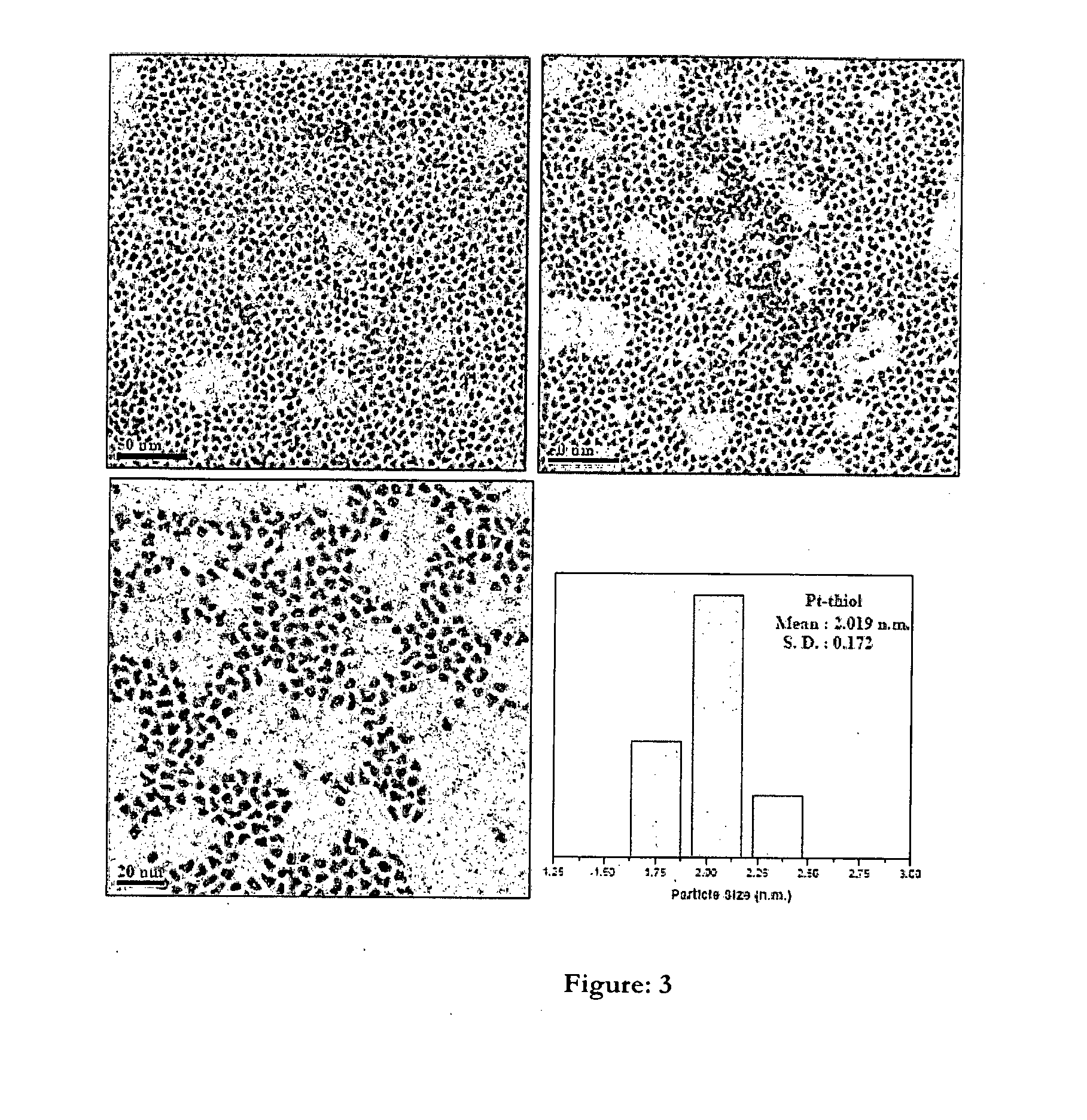One pot process for the preparation of ultra-small size transition metal nonoparticles
a transition metal and nanoparticle technology, applied in the field of transition metal nanoparticle synthesis, can solve the problems of inability to standardize across metals, inability to synthesise ultra-small transition metal nanoparticles, and inability to use phase transfer, etc., to achieve the effect of increasing the cost of the process, reducing the size of the process, and improving the synthesis efficiency
- Summary
- Abstract
- Description
- Claims
- Application Information
AI Technical Summary
Benefits of technology
Problems solved by technology
Method used
Image
Examples
example 1
[0065]Preparation of Platinum Nanoparticle (Pt NP)
[0066]Platinum (II) Chloride was used as a metal precursor to synthesis Pt NP. 0.013 gm Pt Cl2 (1×10−2 M) and 0.053 gm Di-dodecyl dimethyl ammonium bromide (DDAB) (0.025 M) was taken in 5 mL degassed toluene. This mixture was stirred to dissolve the metal precursor in the organic solvent (toluene). Sodium borohydride solution (0.09 gm in 250 microlitre, 9.4 M) was added at a time when the whole metal precursor became soluble in toluene. An immediate color change was occurred from brownish yellow to black. This mixture was stirred for 30 minutes. Then 360 microlitre Di-dodecyl thiol was added to the mixture and it was allowed to stir another 10 minutes. The ratio of metal and capping agent was 1:30. Then this mixture was refluxed at 80° C. for one hour. Now, this solution was allowed to cool at 25° C. Excess ethanol was added to it for precipitation. It was kept for 14 hours. After complete precipitation of metal nanoparticle, the upp...
example 2
[0067]Preparation of Palladium Nanoparticle (Pd NP)
[0068]Palladium (II) Chloride was used as a metal precursor to synthesis Pd NP. 0.009 gm PdCl2 (1×10−2 M) and 0.053 gm Di-dodecyl dimethyl ammonium bromide (DDAB) (0.025 M) was taken in 5 mL degassed toluene. This mixture was stirred to dissolve the metal precursor in the organic solvent (toluene). Sodium borohydride solution (0.09 gm in 250 microlitres, 9.4 M) was added at a time when the whole metal precursor becomes soluble in toluene. An immediate color change was occurred from brownish yellow to black. This mixture was stirred for 30 minutes. Then 360 microlitre Di-dodecyl thiol was added to the mixture and allowed to stir another 10 minutes. The ratio of metal and capping agent was 1:30. Then this mixture was refluxed at 80° C. for one hour. Now, this solution was allowed to cool at 27° C. Excess ethanol was added to it for precipitation and kept for 12 hours. After complete precipitation of metal nanoparticle, the upper ethan...
example 3
[0069]Preparation of Ruthenium Nanoparticle (Ru NP)
[0070]Ruthenium Chloride was used as a metal precursor to synthesis Ru NP. 0.010 gm RuCl3 (1×10−2 M) and 0.053 gm Di-dodecyl dimethyl ammonium bromide (DDAB) (0.025 M) was taken in 5 mL degassed toluene. This mixture was stirred to dissolve the metal precursor in the organic solvent (toluene). Sodium borohydride solution (0.09 gm in 250 microlitres, 9.4 M) was added at a time when the whole metal precursor becomes soluble in toluene. Immediately the solution became dark black. This mixture was stirred for 30 minutes. Then 360 microlitre Di-dodecyl thiol was added as a capping agent, to the mixture and allowed to stir another 10 minutes. The ratio of metal and capping agent was 1:30. Then this mixture is refluxed at 80° C. for one hour. Now, this solution was allowed to cool at 26° C. Excess ethanol was added to it for precipitation. It was kept for 13 hours. After complete precipitation of metal nanoparticle, the upper ethanol porti...
PUM
| Property | Measurement | Unit |
|---|---|---|
| size | aaaaa | aaaaa |
| temperature | aaaaa | aaaaa |
| temperature | aaaaa | aaaaa |
Abstract
Description
Claims
Application Information
 Login to View More
Login to View More - R&D
- Intellectual Property
- Life Sciences
- Materials
- Tech Scout
- Unparalleled Data Quality
- Higher Quality Content
- 60% Fewer Hallucinations
Browse by: Latest US Patents, China's latest patents, Technical Efficacy Thesaurus, Application Domain, Technology Topic, Popular Technical Reports.
© 2025 PatSnap. All rights reserved.Legal|Privacy policy|Modern Slavery Act Transparency Statement|Sitemap|About US| Contact US: help@patsnap.com



